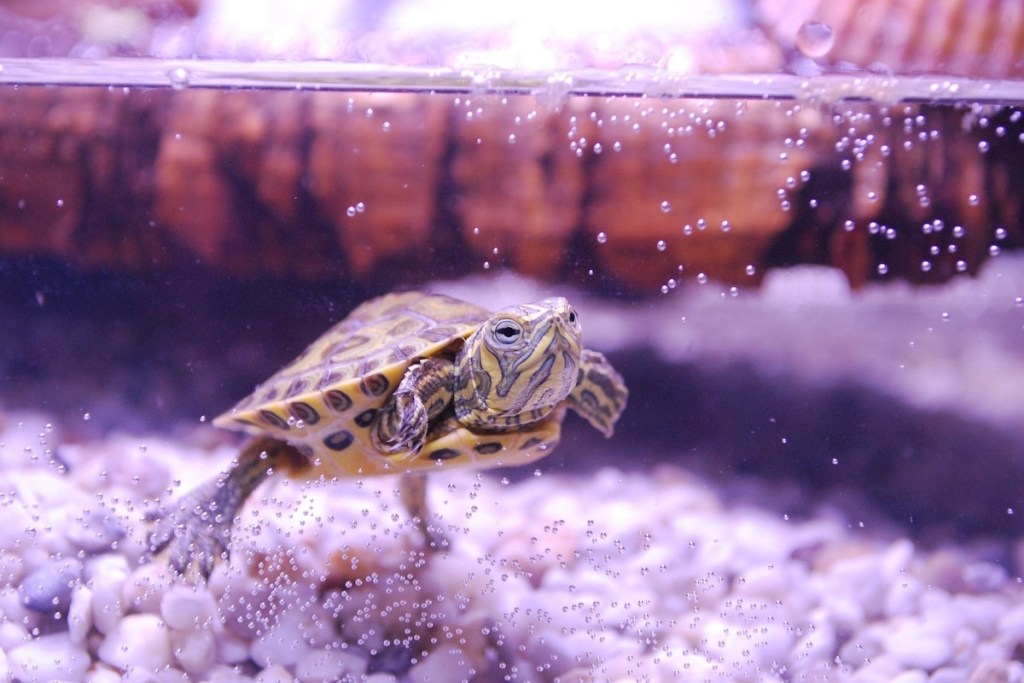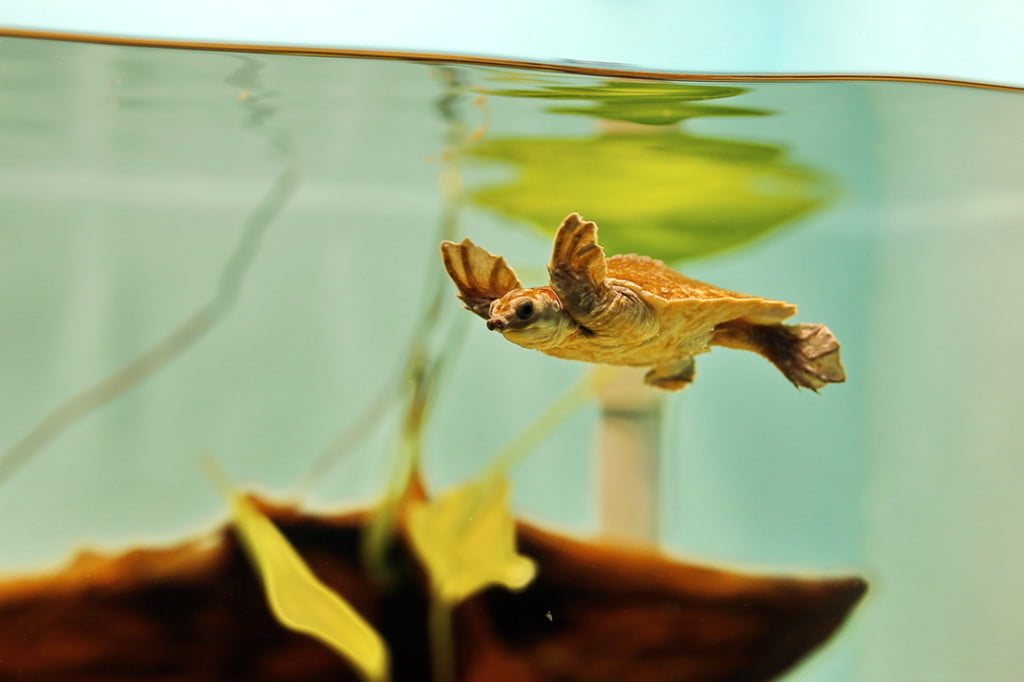Did you know the difference between turtles and tortoises is that turtles live at least partially in the water, while tortoises live exclusively on land? Both types make great pets, but caring for them can be a time-intensive task. If you’re considering buying an aquatic turtle, you should first know how to best take care of one. You certainly don’t want to bring a new turtle home and realize you’re in way over your head. Read on to learn the fundamentals of aquatic turtle care.

What is the water vs. land ratio?
Most turtles spend some time on land; even sea turtles venture to dry ground to lay their eggs. Turtles do not need and should not have enclosures full of water. Small floating platforms that turtles can climb onto should suffice for turtles that spend most of their time underwater. However, some aquatic turtles enjoy exploring the land and need more of a dry area. Research the particular species of aquatic turtle you’re interested in to find out how much time they spend in the water compared to on land.

What should an aquatic turtle’s environment include?
Turtles usually don’t like to be handled and may bite. That means your new reptile will spend most of its time chilling out in its habitat. Their environment should be quiet, with the correct water temperature, lighting, and filtration system. It is vital to their health and well-being for their environment to mimic the dwellings of turtles in nature. Your tank should include the following:
- Plenty of space: First and foremost, you will need a tank of sufficient size to allow your turtle room to swim freely. Individual turtles need at least a 40-gallon tank filled with chlorine-free filtered water.
- Clean water: Because turtles eat and defecate in their water, they need a filter to prevent the waste from polluting the tank. In addition, you’ll need to empty and clean the tank with a bleach solution at least once weekly.
- A basking lamp and heater: The habitat will require a basking lamp and a submersible heater to keep the water cooler at one end than the other. A platform at least partially out of the water is necessary, preferably with a ramp to create a shallow area for basking. Turtles need exposure to an incandescent and UV lamp or direct sunlight for 10 to 12 hours daily for optimum health.
- Extras: You can put gravel or stones at the bottom of the tank as long as they are big enough that your turtle won’t try to eat them. Only one turtle species should live in any given tank, but most can coexist with some fish.

What do turtles eat?
All turtles (but not all tortoises) are omnivores, meaning they eat both plants and meat. Aquatic turtles can eat a variety of foods, though they can survive on a diet of commercial turtle pellets and frozen or dried fish food. Alternatively, you can feed fresh foods to a turtle. Foods that are healthy and safe for turtles include insects like grubs and crickets, earthworms, small fish, and dark leafy greens such as kale and collard greens. Adult turtles only need to eat three to five times per week, and baby turtles may need to eat up to twice a day. In addition, turtles need a calcium supplement, usually in the form of a powder, dusted on their food two to three times per week.

What are the signs that a turtle is sick?
Aquatic turtles can live upward of 20 years, so anticipate having your shelled friend for quite some time! Healthy turtles should be active and alert, eat regularly, have a hard shell and clear skin free of lesions, and have clear eyes and nostrils. Note that turtles shed their scutes (plates that make up their shells) periodically.
These are some telltale signs that your turtle is unwell:
- Hyperactivity or lethargy
- Discharge from the eyes, mouth, or nose
- Discoloration or growths on the shell or skin
- Sneezing
- Not eating
- An overgrown beak
- Abnormal feces
If you notice any of these symptoms, take your turtle to the vet as soon as possible. Calcium deficiencies are relatively common in aquatic turtles, hence the recommendation to supplement their diets with calcium. Turtles often carry salmonella, which can be transmitted to and cause illness in humans. Always wash your hands after handling turtles or parts of their enclosure.

Though they may be tedious to care for, having an aquatic turtle as a pet is a rewarding and interesting experience. The various species of turtles have slightly different behaviors, so be sure to pick one that fits your personality. Soon, you’ll have a reptilian buddy to enjoy!


